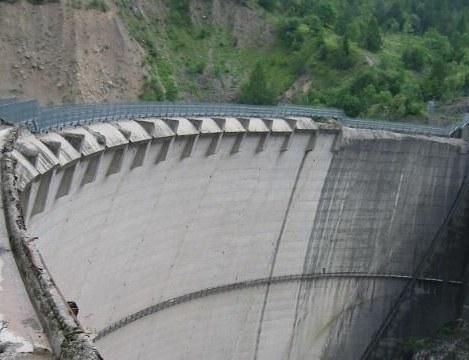40 years after the Vajont disaster the feelings of horror evoked by the tragedy are unchanged. But the legacy of the night of the 9 October 1963 reaches farther than even such feelings. A dam built in the wrong place; the unheeded, unambiguous signals from a natural environment subjected to brutal manipulation; the senselessness of a human error caused by overweening arrogance, and by the economic interests of the few, which destroyed the right to life of a great many. A series of absurdities which, at a distance of 40 years and in the eyes of one who at the time was not yet born, produces these feelings of horror and indignation.
It’s impossible not to feel the obligation to say that one is a “survivor†of a tragedy in which 1909 people died, an obligation first of all to keep alive the historical memory of the disaster.
At 10.39 pm on the evening of 9 October 1963 a huge landslide broke away from the northern slope of Monte Toc and fell into the reservoir below. A mass of rock and detritus two kilometres wide and of a volume of over 270 million cubic metres crashed into the lake with a devastating impact, producing two giant waves. One was pushed up the opposite bank towards the centre of the Vajont valley. The village of Erto was miraculously spared, but the hamlets closer to the lake shore were wiped out. The other wave overtopped the dam and swept down on to the valley below. A volume of over 50 million cubic metres of water fell, increasing its destructive power as it was forced through the narrow gorges of the Vajont. A wall of water almost 70 metres high swept into the Piave Valley at a velocity of nearly 100 km per hour. Longarone, and some nearby villages, were totally annihilated.
In a few minutes, the nightmare which the local inhabitants had feared for months had come true in one of the worst of humanity’s tragedies.
Today, as every year since 1963, Longarone and the surrounding villages commemorate the anniversary with solemn ceremony; 9 October is a day of mourning in the town, devoted to prayer, remembrance and meditation. All the events of the last 40 years are re-lived: the reconstruction of the villages, the solidarity, the social conflict, the postponed legal judgements, the collective and individual grief of the people.
This story must be told to those who do not yet know it, to the younger generations, in the hope that the “lesson of Vajont†will not be forgotten but may serve to improve and maintain the relationship between man and the environment. This is a relationship that must be based on knowledge, on continuous interaction, on participation and synergy, and one in which local communities must be the principal actors. The aim should be social and environmental sustainability, and an end to conflicts, prevarication or catastrophes of this kind.
We recommend a visit to the site www.vajont.net, which offers a detailed reconstruction of the events as well as a number of documents explaining the Vajont tragedy from various points of view.
Our thanks go to Vajont.net for the photograph of the dam published with this article, and for the valuable fund of information it provides.



